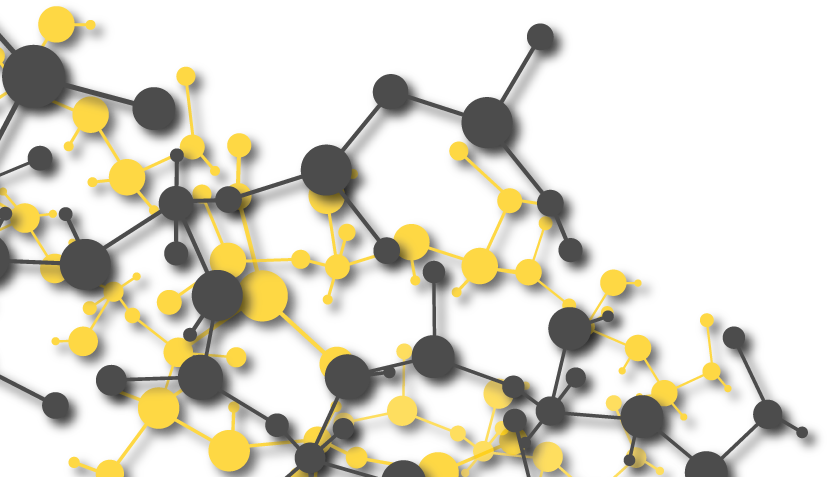Water-based acrylic binders meet environmental requirements for the absence of VOCs, in addition to low toxicity and odor. The diversity of acrylic systems available can be designed to meet binder applications across the spectrum of substrates and printing technologies. Binders should form films smoothly and easily at ambient temperatures. Binders can be readily designed that have a range of Tgs and surface hardness, from low Tgs for flexible surfaces to high Tgs for rigid substrates. The diversity of acrylic monomers and vinyl monomers allow this to be accomplished while meeting other requirements for fast-drying properties, adhesion, water and abrasion resistance, and gloss. The addition of low levels of isopropanol in ink formulations reduces the surface energy of the system, improving ink leveling, thickness, and density control on plastics.
The glass transition temperature (Tg) of the binder resin is a key property in the ink formulation. A low Tg value (typically under 0 °C) improves film formation and properties such as water and grease resistance, flexibility, and adhesion to non-porous substrates. With high Tg binder resins, (up to 45 °C) the properties of hardness, gloss, strength, drying speed, and heat resistance will increase. Acrylic binders have Tgs between -15°C to 40°C. They are composed of various comonomer ratios of “soft” monomers with low Tg contributions such as butyl acrylate (Tg, -45 °C) or 2-ethylhexyl acrylate (Tg, -65 °C) and “hard” monomers with high Tg contributions such as methyl methacrylate (Tg, 105 °C) and styrene (Tg, 100 °C). A functional acidic monomer like glacial acrylic acid is incorporated at a level of about 1%. For additional information on estimating the Tg of copolymers based on the monomer composition, see our article on key facts about acrylic monomers.
Examples of acrylic copolymers used in the formulation of ink binders are provided below. In emulsion polymerizations, the Tg can be significantly influenced by the emulsion components.
|
Tg, 0 °C |
Tg, 18 °C |
Tg, 35 °C |
Tg, 20°C |
|
|
Methyl Methacrylate |
49% | 35% | ||
|
Styrene |
13% | 50% | 50% | |
|
Butyl Acrylate |
50% | 51% | 50% | |
|
2-Ethylhexyl Acrylate |
50% | |||
|
2-Ethylhexyl Acrylate |
1% | 1% | <1% | <1% |
Stable, self-crosslinking acrylic printing inks are emerging that outperform conventional solvent and water-borne printing inks. The acrylic binders utilize the crosslinkable monomers DAAM and AAEM combined with ADH as the crosslinking agent. This system meets the requirements of long-term storage stability and rapid development of film properties that contribute to superior adhesion, gloss, solvent and water resistance, and abrasion resistance. An important feature of this “keto-hydrazide” system is that crosslinking occurs after film coalescence, which maximizes properties and allows re-solubility of the ink on the press. For more information on the chemistry of self-crosslinking acrylic systems, see our article on the DAAM and ADH system. Also, note that AAEM monomer can be further used to improve pigment dispersion and adhesion.
Polyurethane Ink Binders
The rich chemistry of polyurethanes allows great freedom for tailoring of ink performance properties. Intermediate molecular weight, un-crosslinked polyurethanes are used in solvent-based systems. Aqueous PUD binders are produced by the reaction of a difunctional polyol and a diisocyanate and incorporating carboxylic acid groups typically through the addition of dimethylolpropionic acid (DMPA). The carboxylic groups in the polyurethane backbone are neutralized by using ammonia or a tertiary amine-like triethylamine and dispersed into water. The concentration of DMPA effects properties like dispersibility, PUR particle size and water sensitivity of the dried ink.
Polyurethane acrylic hybrids (PUAs) are another important class of ink binders. This includes UV-cured urethane acrylates which possess acrylate terminal functionality derived from the reaction of isocyanate with hydroxyethyl acrylate (HEA). Polyurethanes can also be reacted into acrylic copolymers through hydroxy functionality on the acrylate resin. Inks containing polyurethane resins provide improved toughness, mar-resistance, and adhesive properties.
The properties of the PUDs are determined by the polyol and diisocyanate selected. Polyurethane and urethane acrylic binders provide excellent printability, adhesion to a wide range of films, blocking resistance, and higher gloss properties. Polyether polyol-based PUDs exhibit good hydrolysis resistance, low-temperature flexibility, softness, and adhesion to select substrates. Polyester polyol-based PUDs provide better solvent resistance, toughness, adhesion characteristics and stiffness. The diisocyanate influences properties like UV resistance (aliphatic isocyanates), hardness, durability, and higher temperature performance. For additional information on the design of PURs, please refer to this article on the chemistry of waterborne polyurethane coatings. Gantrade technical personnel can assist in the design and selection of urethane intermediates for polyurethane and hybrid urethane acrylic ink binder resins.
Rheology Modifiers for Ink Formulations
The rheological properties of printing inks play a central role in the storage and application properties of inks in the different printing processes. Performance indicators include ink flow, ink transfer to the surface of printed substrates, penetration into porous substrates, print optical density and image fidelity, and storage stability. Rheology modifiers are used to optimize the flow behavior of inks on a printing press. Non-Newtonian, shear-thinning behavior, which is the tendency of some fluids to decrease in viscosity when they flow under high shear, is an important property afforded by modern rheology modifiers. Thus, inks are formulated with rheology modifiers to prevent sedimentation under storage and low shear, but shear thin at high shear rates to enhance ink transfer and leveling.
Alkali swellable emulsions (ASEs) and hydrophobically modified alkali swellable emulsions (HASEs) are water-soluble polymers with a pH-dependent viscosity profile (low viscosity at low pH values). When properly formulated into an ink, they contribute to excellent low-shear viscosity characteristics for improved flow and leveling, and good film builds during application in a high shear environment. Rheology modifiers contribute smoother ink films with higher gloss on a print surface. HASE associative thickeners show high viscosifying efficiencies and are widely used in ink formulations. To learn more, visit this article specific to our rheology modifiers.
The emulsion and rheology experts and chemists at Gantrade and Tiarco-RST are always available to assist with any formulation challenges and new product development needs. Combining technologies from across our leading-edge chemistry portfolios, we can offer products with distinctive performance properties. Contact our team today with your questions and business challenges—we’re here to help.
At Gantrade, we aren’t just a supplier of monomers, intermediates, polymers, crosslinking chemistries, surfactants, dispersants, rheology modifiers, and related products. We pride ourselves on helping our customers and their teams advance the performance dimensions of ink formulations. Our market intelligence and world-class expertise will help you understand market movements and make informed decisions.
If you’d like to learn more, it’s easy. Submit a Request online or give us a call at one of our global offices.













